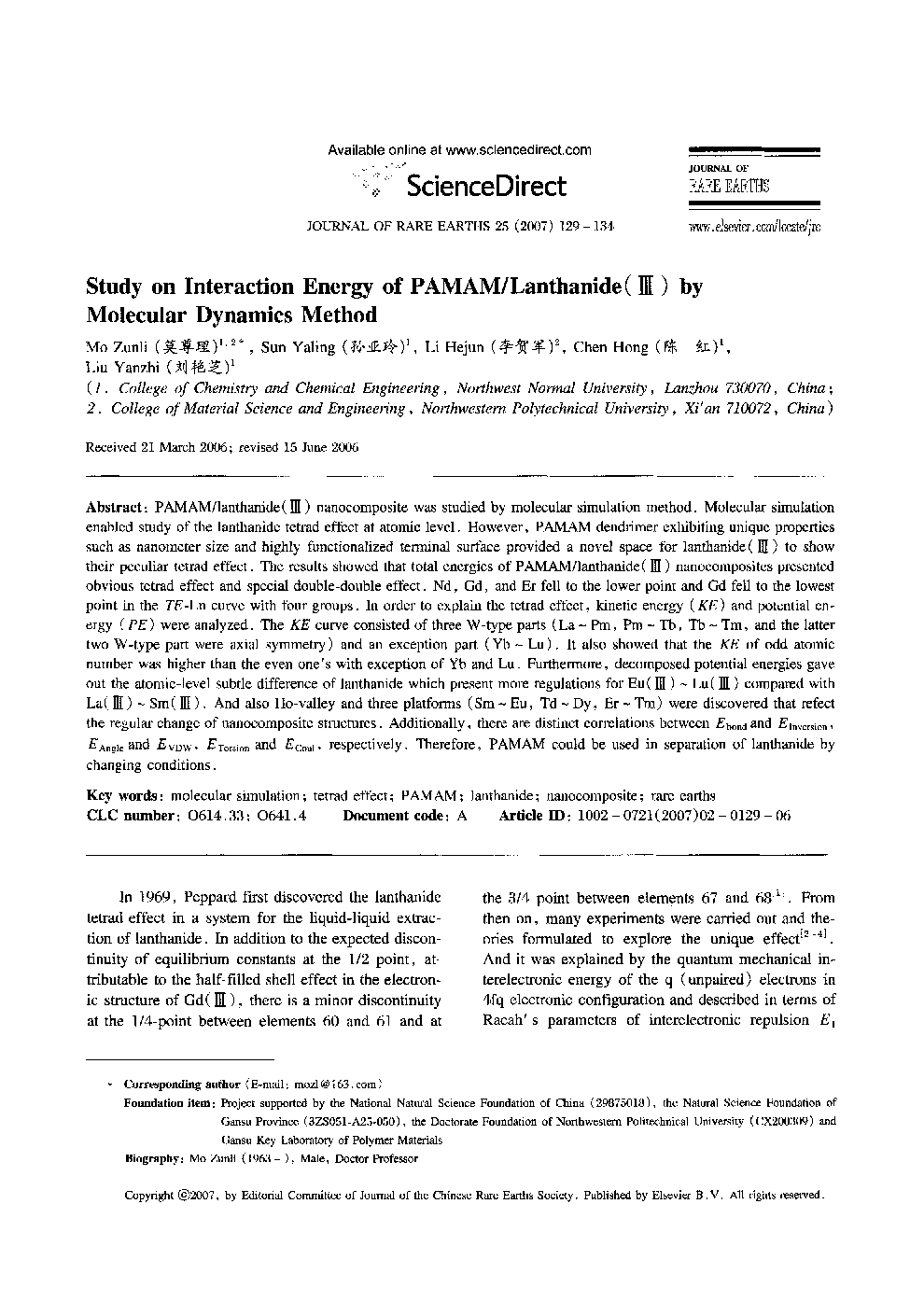| Article ID | Journal | Published Year | Pages | File Type |
|---|---|---|---|---|
| 1262402 | Journal of Rare Earths | 2007 | 6 Pages |
PAMAM/lanthanide (III) nanocomposite was studied by molecular simulation method. Molecular simulation enabled study of the lanthanide tetrad effect at atomic level. However, PAMAM dendrimer exhibiting unique properties such as nanometer size and highly functionalized terminal surface provided a novel space for lanthanide (III) to show their peculiar tetrad effect. The results showed that total energies of PAMAM/lanthanide (III) nanocomposites presented obvious tetrad effect and special double-double effect. Nd, Gd, and Er fell to the lower point and Gd fell to the lowest point in the TE-Ln curve with four groups. In order to explain the tetrad effect, kinetic energy (KE) and potential energy (PE) were analyzed. The KE curve consisted of three W-type parts (La ∼ Pm, Pm ∼ Tb, Tb ∼ Tm, and the latter two W-type part were axial symmetry) and an exception part (Yb ∼ Lu). It also showed that the KE of odd atomic number was higher than the even one's with exception of Yb and Lu. Furthermore, decomposed potential energies gave out the atomic-level subtle difference of lanthanide which present more regulations for Eu (III) ∼ Lu (III) compared with La (III) ∼ Sm (III). And also Ho-valley and three platforms (Sm ∼ Eu, Td ∼ Dy, Er ∼ Tm) were discovered that refect the regular change of nanocomposite structures. Additionally, there are distinct correlations between Ebond and EInversion, EAngle and EVDW, ETorsion and ECoul, respectively. Therefore, PAMAM could be used in separation of lanthanide by changing conditions.
